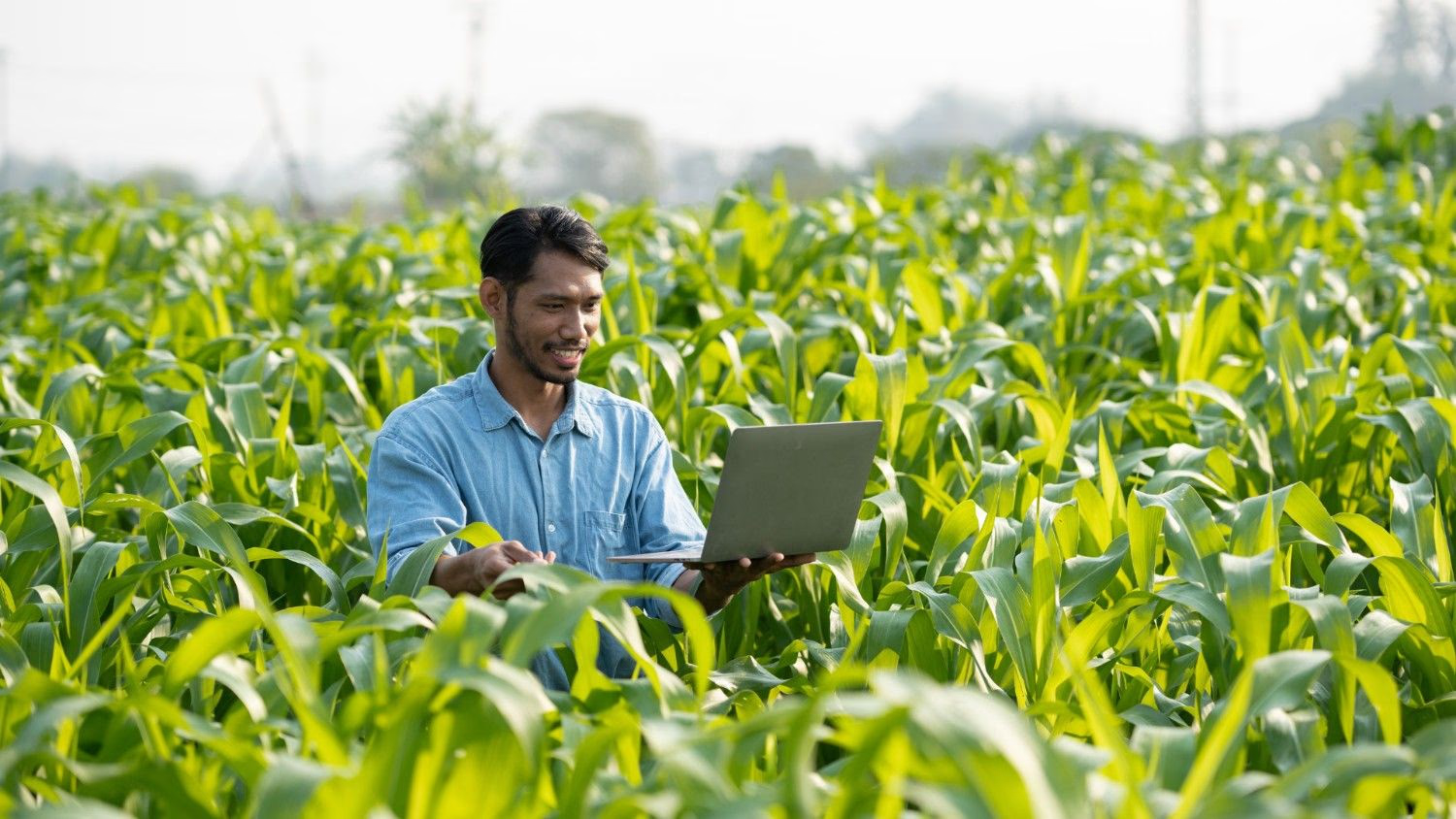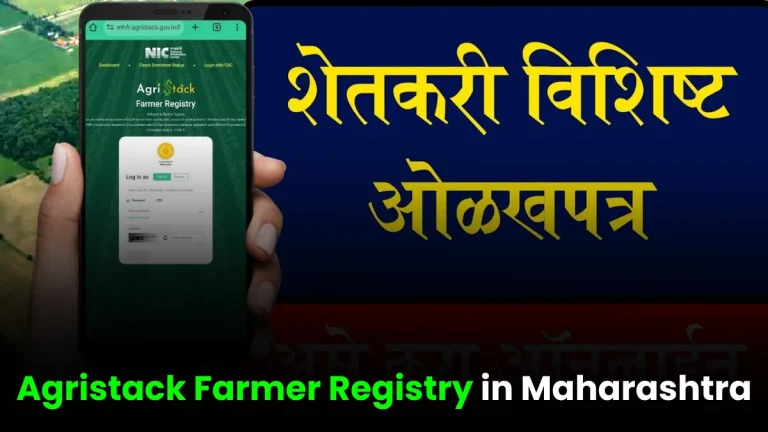How Tractor Attachments Support India’s AgriStack Vision

In recent years, the Indian government has launched an ambitious scheme called Agristack, which aims to improve and modernize farming. Tractor attachments are also included in this scheme. Tractor attachments have recently proven to be very useful for farmers, transforming their lives and increasing agricultural productivity. As the country progresses in technology and IT fields, farmers are increasingly using machines in their work, which is increasing their income, and for this reason, the market for tractor attachments is growing rapidly.
These tractor attachments not only increase farm productivity but also fulfill the goals of India’s Digital Agriculture Mission, or AgriStack.
In short, these modern tools are making farming smarter, more efficient, and more sustainable—and this is the future direction of India’s agriculture.
Overview of Tractor Attachments in Agriculture
In today’s modern era, farming has become very difficult without tractor attachments. With their help, tractors are no longer just machines for carrying goods (tractor trolley) or transporting goods from one place to another, but are also capable of various agricultural and material handling tasks such as post hole diggers for fencing, carrying building materials with their buckets, which are called front loader tractor attachments, post hole digger, w-beam crash barrier.
In India, where agriculture remains a major contributor to the economy and a source of income for farmers, the use of tractor equipment is rapidly increasing. As the country works to modernize its agriculture and increase farmers’ incomes, these tractor-related equipment have become crucial.
With their help, farmers are now able to do more with less effort. This reduces reliance on manual labor, increases the speed and efficiency of farming, and allows farmers to grow more crops at lower costs. Furthermore, these equipment also help farmers practice sustainable and environmentally friendly farming Key Tractor Attachments Benefiting Indian Farmers.
One of the most commonly used tractor implements in India is the plow, which is crucial for preparing the soil for sowing. There are several types of plows—such as moldboard plows, disc plows, and chisel plows—and each has its own specific function.
- Moldboard plows are used to turn the soil and bury old crop residues.
- Disc plows are better for breaking up hard soil and cutting up crop residues left in the field.
- Chisel plows break up the soil without turning it, maintaining its natural soil structure and reducing soil erosion.
By choosing the right type of plow, farmers can ensure their soil is well prepared, allowing seeds to germinate well and improving crop growth.
long with ploughs and seed drills, which are important tractor attachments in farming, farmers are now using their tractors for material handling, fencing, road side barriers and many other purposes. Role of Tractor Attachments in Enhancing Productivity
Tractor Attachments: Powering Growth in India’s Rural Economy
Tractor attachments are making farming and farmers’ work easier, faster, and cheaper, leading to a major transformation in India’s rural economy. While large companies sell expensive equipment, manufacturers in smaller towns and cities are advancing the Make in India (a Government of India initiative) vision by producing quality attachments at affordable prices.
Companies like Bull, which started small and have become major names today, and many local companies like PowerAgro Industries and J.B . Industries are empowering farmers by providing affordable and durable equipment. Despite having neither high margins nor the funds for research and development, these small companies are meeting farmers’ needs and creating jobs, a vital part of the Indian economy.
Overall, tractor attachments are reshaping both agriculture and rural industries, transforming Indian villages into hubs of innovation and self-reliance.
How Tractor Attachments Align with AgriStack Objectives
The AgriStack vision aims to create a comprehensive digital ecosystem for agriculture in India, leveraging technology and data to improve farm productivity, sustainability, and farmer livelihoods. Tractor attachments align with this vision in several key ways. First, they enable the adoption of precision agriculture techniques, which are central to the AgriStack objectives. By integrating sensors, GPS, and other data-driven technologies with tractor attachments, farmers can optimize various farming operations, from soil preparation to harvesting. This not only improves efficiency and yields but also reduces the environmental impact of agriculture.
Second, tractor attachments support the goal of sustainable agriculture, which is a core component of the AgriStack vision. Many modern attachments are designed to promote soil health, conserve water, and reduce the use of chemical inputs. For example, conservation tillage tools like chisel plows and no-till seed drills help maintain soil structure and reduce erosion, while precision sprayers minimize the use of pesticides and fertilizers. By adopting these sustainable practices, farmers can contribute to the long-term health of the agricultural ecosystem, ensuring that it remains productive and viable for future generations.
Finally, tractor attachments contribute to the economic empowerment of farmers, another key objective of the AgriStack vision. By improving productivity and efficiency, these tools help farmers achieve higher yields and better quality produce, which can translate into increased income. Additionally, the reduced reliance on manual labor and optimized use of resources can lower production costs, further enhancing profitability. As farmers adopt more advanced tractor attachments and integrate them with digital technologies, they can access new markets, improve their bargaining power, and achieve greater financial stability. In this way, tractor attachments play a vital role in realizing the economic and social goals of the AgriStack vision.
Case Studies: Successful Implementation of Tractor Attachments
Tractor attachments are revolutionizing both agriculture and rural industries in India. Tasks that previously required long hours of manual labor can now be accomplished quickly and efficiently with the help of innovative attachments. Let’s look at some real-world examples of how these devices are transforming rural work and productivity.
1. Front Loader Attachment
The front loader attachment has proven to be a game-changer for farmers and rural workers. Previously, lifting and carrying soil, manure, or harvested crops required a lot of manpower and time. Now, with a front loader attached to a tractor, these tasks can be performed easily and efficiently. Farmers are using it not only for farm work, but also in construction, road maintenance, and material handling, saving time, labor, and cost while also increasing overall productivity.
2. Post Hole Digger
The post hole digger is another highly useful tool, especially for fencing, tree planting, and installing irrigation systems. Traditionally, digging pits by hand was time-consuming and physically exhausting. With this equipment, farmers can now dig uniform and deep pits in minutes, reducing manual labor and accelerating agricultural and infrastructure projects in rural areas.
3. Clay Brick Making Machine Tractor (A New Innovation)
One of the latest innovations in tractor equipment is the clay brick making machine. It was invented not by a major company, but by a small company in rural India, Khatauli, Muzzafarnagar, Uttar Pradesh. One of the most prominent names is Poweragro Industries, which has developed the machine with great effort and little money. Their clay brick making machine has been a success and an icon of Make in India in rural India and similar companies.
Previously, brick making required intense physical labor in the scorching sun. This new equipment allows farmers and rural entrepreneurs to produce bricks mechanically with minimal effort. This not only reduces physical stress, but also increases production and ensures uniform brick quality.
In short, these examples demonstrate how tractor equipment is fostering efficiency, innovation, and rural entrepreneurship. These are no longer just agricultural implements—they are the engines of growth for India’s self-reliant and technology-driven rural economy.
Challenges Faced in Adoption of Tractor Attachments
Despite the numerous benefits of tractor attachments, their adoption in India faces several challenges. One of the primary barriers is the high initial cost of purchasing these attachments. Many small and marginal farmers, who make up a significant portion of the agricultural workforce in India, often lack the financial resources to invest in advanced machinery. Although government subsidies and financing schemes are available, they are not always sufficient to cover the full cost, and many farmers remain unable to afford these tools. This financial constraint hampers the widespread adoption of tractor attachments and limits their impact on farm productivity and sustainability.
Another challenge is the lack of awareness and technical knowledge among farmers regarding the use and maintenance of tractor attachments. Many farmers are not familiar with the latest technologies and practices, and they may be hesitant to adopt new tools that they do not fully understand. Additionally, the availability of training and extension services is often limited, particularly in remote and rural areas. Without proper guidance and support, farmers may struggle to effectively use and maintain their attachments, leading to suboptimal performance and reduced benefits. Addressing this knowledge gap is crucial for ensuring the successful adoption and utilization of tractor attachments.
Furthermore, the availability and accessibility of tractor attachments can be a significant challenge, particularly in remote and rural areas. Many farmers face difficulties in accessing the latest attachments and spare parts, as well as finding qualified technicians for repairs and maintenance. The distribution networks for agricultural machinery are often underdeveloped, leading to delays and increased costs for farmers. This issue is compounded by the lack of local manufacturing and assembly facilities, which can result in higher prices and limited options for farmers. Improving the supply chain and distribution infrastructure for tractor attachments is essential for overcoming these challenges and ensuring that farmers can access the tools they need to enhance their productivity.
Government Initiatives Supporting Tractor Attachment Usage
The Indian government has recognized the importance of modernizing agriculture and has implemented several initiatives to support the adoption of tractor attachments and other advanced farming technologies. One such initiative is the Pradhan Mantri Krishi Sinchayee Yojana (PMKSY), which aims to improve water use efficiency and promote sustainable irrigation practices. Under this scheme, farmers can receive financial assistance for purchasing drip and sprinkler irrigation systems, which can be attached to tractors for efficient water delivery. By promoting the use of these attachments, the government is helping farmers conserve water and improve crop productivity.
Another key initiative is the Sub-Mission on Agricultural Mechanization (SMAM), which aims to increase the mechanization of Indian agriculture by providing subsidies for the purchase of agricultural machinery and equipment, including tractor attachments. Through this program, farmers can receive financial support to invest in tools such as seed drills, plows, and harvesters, making these technologies more accessible and affordable. Additionally, the scheme includes provisions for establishing custom hiring centers, where farmers can rent tractor attachments and other machinery, further easing the financial burden and promoting the adoption of mechanized farming practices.
The Digital India program, launched by the Indian government, also plays a crucial role in supporting the AgriStack vision and the adoption of advanced tractor attachments. This initiative aims to promote digital literacy and connectivity in rural areas, enabling farmers to access information, training, and support services related to modern farming technologies. By leveraging digital platforms and tools, farmers can learn about the latest tractor attachments, receive remote assistance for maintenance and repairs, and access real-time data for optimizing their farming operations. This digital transformation is essential for ensuring that farmers can fully utilize the potential of tractor attachments and achieve the goals of the AgriStack vision.
Conclusion: The Future of Agriculture in India with AgriStack and Tractor Attachments
As India advances its Agristack vision, the role of tractor attachments in agriculture is becoming increasingly important. These modern tools not only increase productivity and efficiency but also promote sustainable farming—one of Agristack’s core goals. These attachments are now enabling farmers to harvest more produce with less effort. They reduce manual labor, optimize resource utilization, and facilitate precision farming. As a result, farmers are achieving better quality crops and higher profits.
In the future, new trends like artificial intelligence (AI), robotics, and sustainability will make tractor attachments even smarter and more efficient. This will play a crucial role in India’s economy. However, experts believe that while machines are speeding up work, they are also taking away wage labor. However, there’s no doubt that India will move forward on this path, and we hope the Indian government will equip workers with the skills to operate machines.
If India continues to adopt these technologies and increase investment in modern agriculture, the country will be able to build a more productive, sustainable, and prosperous agricultural sector in the coming years—improving the lives of farmers and ensuring food security for generations to come.






